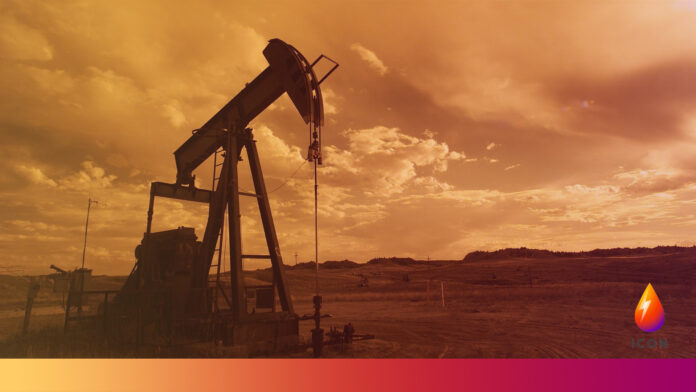The Industrial Internet of Things (IIoT) has been transforming global industries and driving digitalisation for some years now – the oil and gas sector is no exception. From asset management through to remote performance monitoring and maintenance, the IIoT eco-system is delivering efficiencies and productivity to meet the demands of an ever-evolving energy landscape.
But everything is underpinned by reliable and resilient connectivity. After all, fragmented and data gaps can give a wildly inaccurate picture of operations and assets.
Here, Alastair MacLeod, CEO of remote connectivity provider Ground Control, argues that despite the myriad of measurable benefits IIoT offers, everything will fall at the first hurdle if connectivity isn’t addressed as a priority.
Globally, the oil and gas industry has been in the spotlight in recent months, arguably more so than ever before. While there is a mutual drive for nations to reduce reliance upon hydrocarbons, energy security has climbed the agenda, not least because of the conflict in Ukraine. This has meant a shift – even if it’s a temporary one – in strategy, which has impacted economies and upstream suppliers significantly.
What is evident however, is that the industry continues to innovate to meet challenges like these head on and IIoT is at the heart of this.
Given the often hostile and remote nature of the environments in which oil and gas plants are situated, the ability to monitor and analyse data, enabling quick, effective business decisions, and automation would not be possible without the rapid, real-time delivery of data.
The biggest challenge is how that data is carried. Despite enhanced roll-out of faster wireless 4G / 5G services, it’s estimated that only 15% of the earth’s surface has cellular coverage. However, for Europe at least, this has been accelerated due to strong financing provided by the Next Generation EU Plan – a temporary measure to help support the economic and social damage caused by Covid-19 to the tune of €750bn ($868bn).
Connecting the dots
In a recent report, analysts McKinsey & Co suggested that advanced connectivity ‘could add up to $250 billion of value to the industry’s upstream operations by 2030.’ In addition, the report also recommends that technology to improve connectivity needs to be leveraged. And that’s where satellite comes in.
There are data challenges at every stage of the well lifecycle, as we ourselves outlined recently here, and while for many operators satellite has been deemed an expensive option in the past, it is reducing in cost as more providers diversify their offering.
In addition, and crucially, the cost of an ‘always on’ connectivity solution is a drop in the ocean when compared to the potential costs and repercussions of having to support operations with data delays or gaps. Especially when you consider the bandwidth required for such data is relatively low – we aren’t livestreaming HD video here.
Satellite is currently the only fail-safe option to ensure connectivity isn’t compromised. It enables companies to retrieve real-time data, from previously unreachable sites and provides a robust failover should anything happen.
Satellite connectivity, including the newer low earth orbit (LEO) satellites – which offer improved speed and ultralow latency to transmit sensor data back to SCADA software – is reliable, effective, and capable of bridging the gap between legacy technology and digital service evolution. What’s more, it can be implemented at a far lower cost than many might think, particularly in the case of devices which support exception reporting.
The impact of no connectivity
Without consistent, reliable connectivity, and subsequently the ability to manage vast streams of data, oil and gas companies not only become operationally hamstrung, but the impacts will be felt in performance and on the bottom line.
Robust connectivity is crucial for all the reasons so far outlined. But crucially, it keeps an oil and gas company efficient and operational – critical in the turbulent times we now face.
Satellite allows timely delivery of critical information, negating the requirement for employees to make frequent and costly onsite visits in areas not serviced by 4G / 5G, and provides the ability to diagnose problems online before any production time is lost and costly breakdowns occur.
From exploration through to drilling, hydraulic fracturing, flowback well testing production, artificial lift and enhanced oil recovery, satellite connectivity delivers accurate, real-time data for full operation visibility. Not just when it is needed, but autonomously.
We have supported oil and gas production for decades, and we’ve never been more excited about the potential of new IIoT-based satellite services. From edge computing devices to artificial intelligence and machine learning, the oil and gas industry has never had more sophisticated capabilities to optimise data capture and automate processes.
But that comes with a caveat –without the connectivity infrastructure to transfer sensor data from anywhere in the world, regardless of location, the value of IIoT falls dramatically. Data gaps and interruptions can ultimately lead to poor business decisions.
Over the coming decade, potentially thousands of satellites, including NanoSats for remote surveillance around the world, will be launched into Earth’s orbit and this will alter how all industries operate, providing even greater opportunity at more affordable costs for oil and gas companies to maximise their data, and operations.

